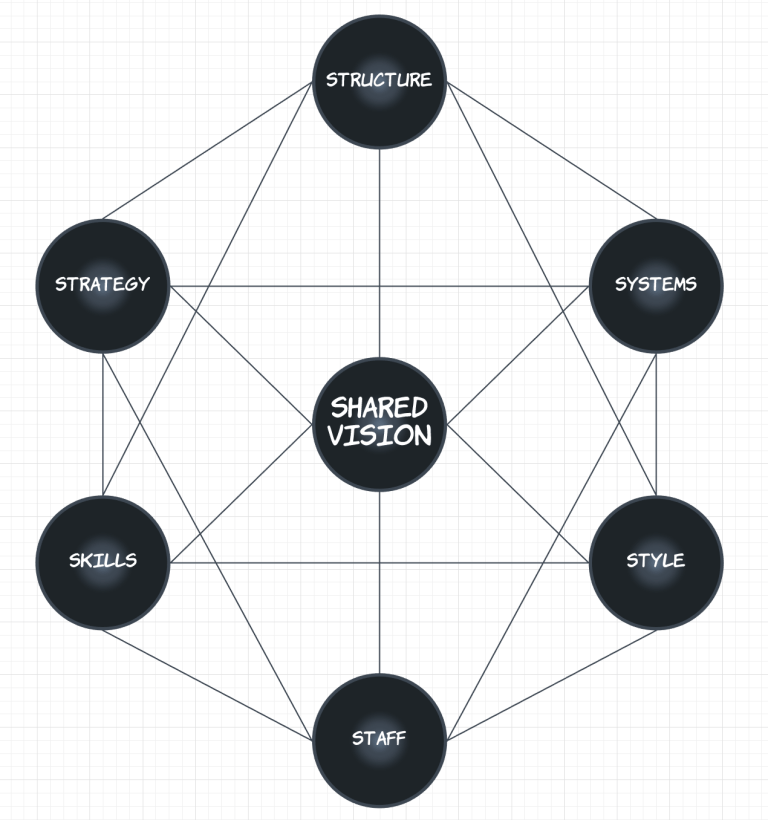Nonprofits exist for a noble cause, to serve people and society (The Mission). To be relevant in today’s digital world and drive mission success, nonprofits have to leverage the power of data and technology through digital transformation. COVID-19 has proven further that nonprofits have to transform themselves to be digital-first now or face extinction.
First, why is Digital Transformation critical for nonprofits?
The following are four key areas in which nonprofits can accelerate their organization’s objectives digitally:
- Use digital channels to grow, engage, and retain supporters.
- Provide a personalized engagement experience for supporters.
- Become a data-driven nonprofit by leveraging data, analytics, A/I, and ML to formulate strategy and drive execution.
- Create a culture of innovation and operations excellence by automating redundant and manual processes with technology.
Second, what is the recommended framework for nonprofits to strategize and execute their digital transformation journey – faster and more effectively?
Embarking on a digital transformation journey needs commitment from all levels of the organizational hierarchy, clarity on strategy and end-state success metrics, investment of time and resources, the ability to quickly learn from failures, and razor focussed agile execution to gain velocity. Nonprofits also need to keep in mind the large (~70%) failure rates with digital transformation.
We have successfully leveraged the following five-step framework to drive digital transformation at JDRF. Please note that the following recommended framework is a continuous virtuous cycle as digital transformation is an ongoing process, not a one-time endeavor.

Step One – Formulate a Supporter-Centric Strategy
Nonprofits need to take an “outside-in” vs. “inside-out” approach, in defining their digital transformation strategy (ensuring supporter’s needs are met first). The key mistake nonprofits make is to create strategies that are internal vs external facing (It should be S2N vs. N2S aka C2B vs. B2C in the for-profit world). Nonprofits need to develop programs, products, and services to meet supporters’ preferences and experience needs. For example, millennial donors need an easy mobile donation experience, volunteers need to know how their talent and time will be leveraged, and the community (the nonprofits serve) needs information delivered in a seamless and personalized manner on their mobile devices.
Step Two – Create Clearly Defined Goals (Digital Transformation Success Metrics)
The key digital transformation success goals (KPIs or OCRs) have to be defined and aligned to the nonprofit’s mission. This will ensure the right capabilities and projects are prioritized and built with the available resources. Examples of key KPIs are shown below.

Step Three – Design the Architecture of Digital Capabilities
Building digital transformation capabilities is like building a new “smart home” and will need all teams in a nonprofit organization to come together (e.g., Development, Technology, Marketing, Advocacy, Finance, etc.). As with building a home, nonprofits need to start with both business and the enabling technology architecture. The overall architecture will then define what projects need to be part of the digital transformation roadmap.
Step Four – Agile Execution of Digital Transformation Roadmap
Nonprofits need to leverage the design thinking approach and Agile delivery process to ensure faster and effective build of digital transformation capabilities. The root cause for high failure rates with digital transformation is not the “strategy” but “execution rigor”. Agile delivery methodology will ensure innovation, speed, and fail fast/learn faster execution culture.
Step Five – Manage Change to Ensure Your Organization Embraces the Transformation
With digital transformation comes change. Nonprofits that embrace change will be successful, and the ones who succumb to inertia will fail. McKinsey 7S framework is an effective model to ensure change management is implemented effectively for nonprofits.

Finally, nonprofits need to keep in mind that digital transformation is not a one-time effort but a continuous iterative process to ensure relevancy and accelerate mission objectives.
Sri Mishra
Digital transformation is a journey and not a destination. We are in a digital world now, and it will remain so for a long time to come. To thrive in the digital ecosystem, nonprofits have to be digital-first, invest in digital transformation, measure success, learn from failures, be innovative, and adapt to stakeholders’ changing needs.
Digital transformation is an effective lever that will make your nonprofit relevant and support the noble mission you want to deliver for your constituents.
The time to take action is now!











